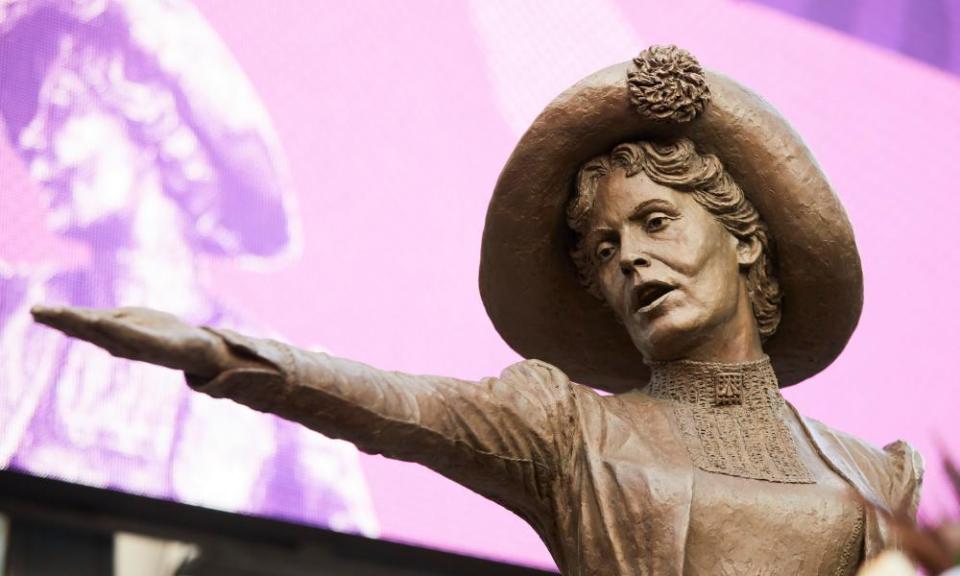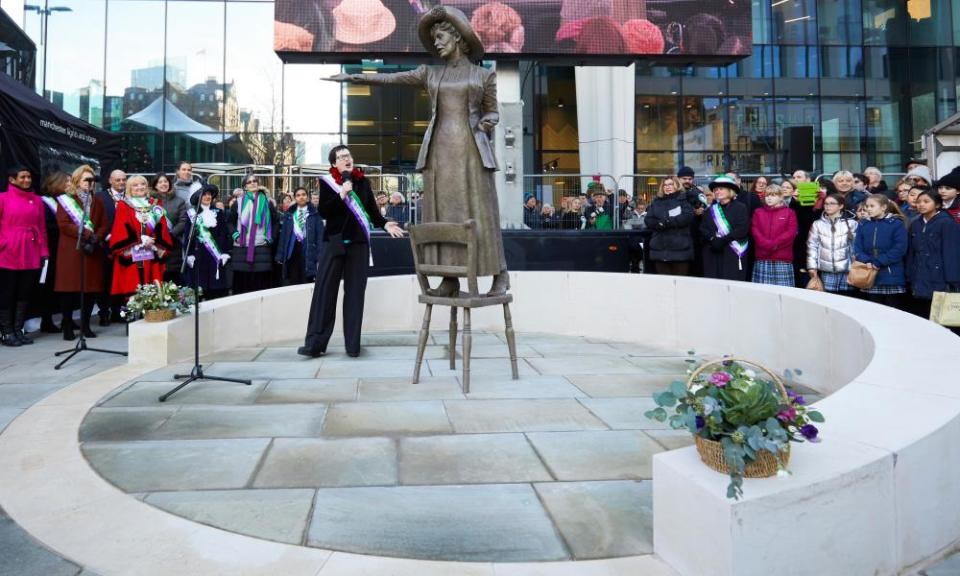The Great British Art Tour: Manchester celebrates 'Our Emmeline', who changed history

This powerful and evocative work was created by the sculptor Hazel Reeves. Titled Rise Up, Women, it is colloquially referred to as “Our Emmeline”, and was unveiled in St Peter’s Square, Manchester, on 14 December 2018, marking 100 years since some women were granted the right to vote.
Its unusual design depicts Emmeline Pankhurst surmounting a chair, addressing a mass demonstration. Oriented towards the former Free Trade Hall, where the first women’s suffrage meetings took place, it is set at the centre of a “meeting circle”, also designed by Reeves.

Pankhurst was born in Moss Side on 15 July 1858, and went on to become the leader of the suffragette movement. On 10 October 1903 she founded the Women’s Social and Political Union; their motto was “Deeds not words”. Membership was restricted to women but open to those from any social class.
In 1910, Pankhurst moved the WSPU headquarters to London, and their campaign became increasingly militant. Many of its members were arrested and endured brutality in prison, including force-feeding.
The date the statue was unveiled marked the centenary of the first general election in which, as a result of the Representation of the People Act 1918, some women and all men were given the right to vote. Although it was not until the Equal Franchise Act of 1928 that all women over the age of 21 were able to vote, finally attaining the same voting rights as men, this was a remarkable landmark in British history. As part of the unveiling ceremony, colourful and noisy marches took place from two symbolic Manchester locations – the People’s History Museum and the Pankhurst Centre. Helen Pankhurst, the suffragette’s great-granddaughter, was among those who unveiled the work.
The statue was commissioned by the Emmeline Pankhurst Statue Campaign, and Manchester city council. The selection of Pankhurst as the subject of the work was made through public vote from a list of 20 inspiring Mancunian women. Reeves has referred to the enormous sense of responsibility she felt in capturing the essence of this remarkable woman.
• You can see more public sculpture on Art UK here.
• This series is brought to you in collaboration with Art UK, which brings the nation’s art together on one digital platform and tells the stories behind the art. The website shows works by 50,000 artists from more than 3,000 venues including museums, universities and hospitals as well as thousands of public sculptures. Discover the art you own here.

 Yahoo Finance
Yahoo Finance 